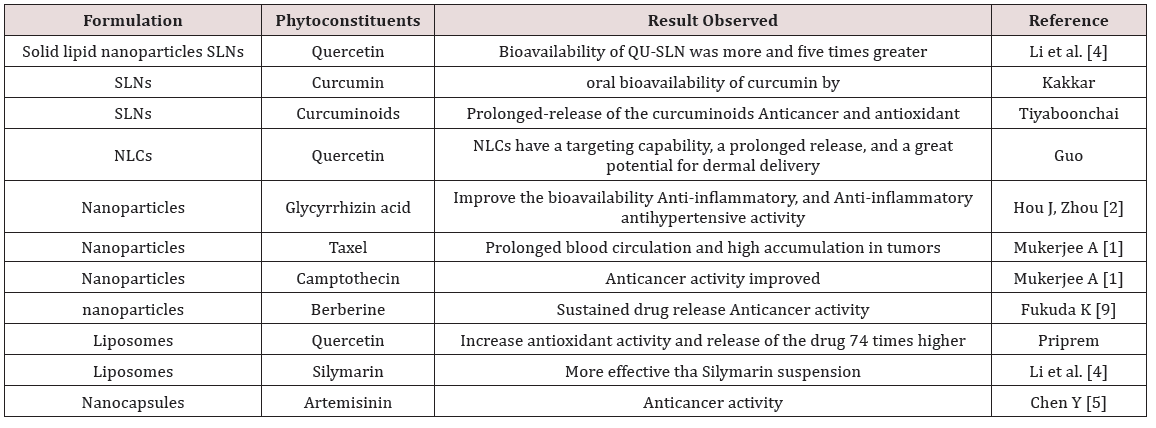Lupine Publishers| Archives of Nanomedicine: Open Access Journal (ANOAJ)
Introduction
Herbal medicines have been widely used around the world since ancient times. Medicinal plants are most effective when their active constituent reach at the site of action. Most of plant contains flavonoids, tannins, and terpenoids, which are hydrophilic and unable to cross the lipid membranes of the cells so poor absorption, results in less bio availability and efficacy hence need to take in high dose and frequency of dose also increases. If they are formulated using nanotechnology, due to nano ¬structured systems might be able to potentiate the action of plant extracts also reduce the required dose and side effects, and improving activity. Research has shown that use of nanotechnology and formulations like nano liposomes, nano emulsions, lipid nanocarries, phytosomes, micelles and poly (lactic-co-glycolic acid) (PLGA) nanoparticles beneficial in case of phyto constituent they increases the rate of absorption bio availability and result in better effect of herbal medicines [1-10].
The Techniques Commonly Used for the Formulation are:
a) High-pressure homogenization methods
b) Complex coacervation method
c) Co-precipitation method
d) Salting-out method
e) Nano precipitation method or solvent displacement method
f) Solvent emulsification-diffusion method
Types of Nano Pharmaceuticals
a) Polymeric nanoparticles
b) Solid lipid nanoparticles
c) Magnetic nanoparticles
d) Metal and inorganic nanoparticles
e) Quantum dots
f) Polymeric micelles
g) Phospholipids micelles
h) Colloidal nano-liposomes
i) Dendrimers
Conclusion
Nanotechnology has potential future for enhancing the activity and overcoming problems associated with herbal medicines and phyto constituents Table 1. By applying nanotechnology principles it is possible to reduce the amount of drug to be loaded and hence prevent many dose-related adverse reactions. Several excellent phyto constituents have been successfully delivered using nanotechnology currently, not many products are available for clinical use, but looking at the amount of research activity happening in this field, the next few years many products being launched in the market for clinical use.
Read More About Lupine Publishers Archives of Nanomedicine: Open Access Journal (ANOAJ) Please Click on Below Link: https://lupine-publishers-nano-science.blogspot.com/


No comments:
Post a Comment
Note: only a member of this blog may post a comment.